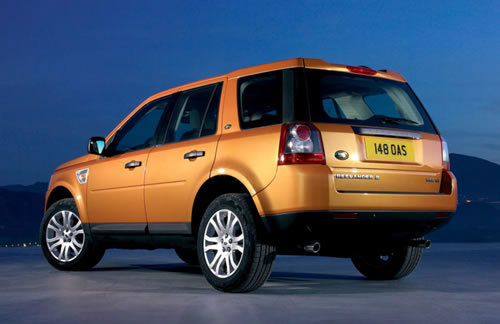
Jeevan Sathi
Tuesday, May 29, 2012
Thursday, July 24, 2008
Sunday, June 22, 2008
THE HISTORY OF HERO GROUP
Men of Steel
The success of the Hero Group lies in the determination and foresight of the Munjal brothers, who shared their vision with their workers and led the Group to a position where its name has become synonymous with top-quality two wheelers.
The flame kindled by the Munjal brothers in 1956 with the flagship company Hero Cycles; Mr. Satyanand Munjal, Mr. Brijmohan Lall Munjal and Mr. O. P. Munjal continue to carry the torch and are actively involved in the day-to-day operations of the Hero Group.
The saga is being continued with the same zeal by the second and third generations of the family and by the large working force of the Hero Group. The spirit of enterprise which dominates the progress of the Group is characteristic of the land where it all began - the City of Ludhiana, in Punjab - home to some of lndia's finest workers and entrepreneurs.
The Hero Group is a thriving example of three generations of a family working and striving together to ensure quality, satisfaction and extensive growth.
Milestones
Hero's success saga contains an element of spirit and enterprise; of achievement through grit and determination, coupled with vision and meticulous planning.
1956
Hero Cycles Limited is established.
1961
Rockman Cycles Industries Limited established, which is today the largest manufacturer of bicycle chains and hubs.
1963
It pioneered bicycle exports from India - a foray into the international market.
1971
Highway Cycles was set up to meet the demands of Hero Cycles. It is today the largest manufacturer of single speed and multi-speed freewheels.
1975
Hero Cycles Limited became the largest manufacturer of bicycles in India.
1978
Majestic Auto Limited was formed and the Hero Majestic Moped was introduced.
1981
Munjal Castings established.
1984
Hero Honda Motors Limited established in joint venture with Honda Motors of Japan, to manufacture motorcycles.
1985
Munjal Showa Limited established to manufacture shock absorbers and struts and is today among the top two shock absorber manufacturing companies in India.
1985
The 100 cc Hero Honda Motorcycle arrived and by 1988 was the No. 1 among all motorcycles in India.
1986
Hero Cycles Limited entered the Guinness Book of Records as the largest bicycle manufacturer in the World.
1987
Hero Motors, a division of Majestic Auto Limited set up in collaboration with Steyr Daimler Puch of Austria.
1987
Gujarat Cycles Limited, now known as Munjal Auto Industries Limited was established to manufacture and export state-of-the-art bicycles and allied products in its fully automated plant at Waghodia.
1987
Sunbeam Auto Limited, earlier a unit of Highway Cycles Limited, established as an ancillary to Hero Honda. It is the largest die casting plant in India.
1988
Introduced "Hero Puch" from Hero Motors Limited. This revolutionary machine immediately set new records of petrol efficiency and usable power in 50 - 65 cc machines.
1990
Hero Cold Rolling Division established and is one of the most modern steel cold rolling plants.
1991
Hero Honda receives National Productivity Council's Award.
1991
Hero Honda receives the Economic Times - Harvard Business School Association Award against 200 contenders.
1992
Munjal Showa Limited receives National Safety Award.
1993
Hero Exports established as the International Trading Division for Group and non-Group products.
1993
Hero Motors becomes Indias largest exporter of two wheelers
1995
Hero Corporate Services Limited as the service segment for the Hero Group Companies, ancillaries, suppliers, dealers and other associates.
1996
- Hero Winner, a large-wheeled scooter was introduced by Hero Motors Limited with a choice of 50 cc and 75 cc engines.
1996
Munjal Showa Limited receives British Council's National Safety Award.
1998
- Hero Briggs and Stratton Auto Private Limited was set up to produce 4-stroke two-wheeler engines in various cubic capacities.
1998
Munjal Auto Components established to manufacture gear shafts and gear blanks for motorcycles.
2000
The Hero Group diversifies into IT and IT enabled services through its service segment - Hero Corporate Services Limited.
2000-2001
Hero Honda emerges as the market leader in motorcycles with sales of over a million motorcycles and a strong market share of 47%.
2001
Hero Global Design established to offer engineering services in CAD/CAM/CAE related to New Product Development, Design, Engineering and Manufacturing.
2002
Hero Cycles ties up with National Bicycle Industries, part of Matsushita Group to manufacture high-end bicycles.
2002
Fastener World Established.
2002
Easy Bill Established to offer utility bill collection & retail services.
2003
Tie up with Livebridge Inc., USA.
2004
Tie up with Bombardier - Rotax GmbH for scooter engines.
2004
Tie up with Aprilia Scooters, Italy.
2004
Hero Honda continues as the World's largest manufacturer of two-wheelers with annual sales volume of 2.07 million motorcycles and a market share of 48%.
2004
Retail Insurance business established.
2004
HeroITES, a division of HeroCorporate Service Limited hived off as a division of new company Hero Management Service Limited.
2005
HeroITES strengthens its relationship with ACS,USA,USD 5.0 billion market cap and Fortune 500 company.
2006
Hero Honda enters the scooter segment, launches 100cc "Pleasure"
2006
Hero Honda crosses a unit sales threshold of 3.0 million motorcycles
2006
Hero Group celebrates Golden Jubilee year since inception.It was commemorated by sales of over 15 million motorcycles & over 100 million bicycles.
Today, Hero Group comprises of 20 companies, 300 ancillary suppliers, deep market penetration with over 5,000 outlets, 23,000 + employee and has a turnover of US$ 3.20 billion (FY 2006).
Monday, June 2, 2008
The History of Paper
In few years, the Chinese began to use paper for writing. Around 600 A.D. woodblock printing was invented and by 740 A.D., The first printed newspaper was seen in China.
To the east, papermaking moved to Korea, where production of paper began as early as the 6th century AD. Pulp was prepared from the fibers of hemp, rattan, mulberry, bamboo, rice straw, and seaweed. According to tradition, a Korean monk named Don-cho brought papermaking to Japan by sharing his knowledge at the Imperial Palace in approximately AD 610, sixty years after Buddhism was introduced in Japan.
Along the Silk Road, we learned that paper was introduced to Xinjiang area very early according to the archaeological records. The paper found at Kaochang, Loulan, Kusha, Kotan, and Dunhuang sites dated as early as the 2nd. century. The technique eventaully reached Tibet around 650 A.D. and then to India after 645 A.D. By the time Hsuan Tsang from China arrived to India in 671 A.D., paper was already widely used there.
For a long time the Chinese closely guarded the secret of paper manufacture and tried to eliminate other Oriental centers of production to ensure a monopoly. However in 751 A.D. the T'ang army was defeated by the Ottoman Turks at a mighty battle at the Talas River. Some Chinese soldiers and paper makers were captured and brought to Samarkand. The Arabs learned the paper making from the Chinese prisoners and built the first paper industry in Baghdad in 793 A.D. They, too, kept it a secret, and Europeans did not learn how to make paper until several centuries later. The Egyptians learned the paper making from the Arabs during the early 10th century. Around 1100 A.D. paper arrived in Northern Africa and by 1150 A.D. it arrived to Spain as a result of the crusades and established the first paper industry in Europe. In 1453 A.D. Johann Gutenberg invents the printing press. The first paper industry in the North America was built in Philadelphia in 1690.
Wednesday, May 21, 2008
Land Rover: History
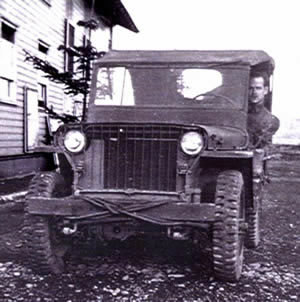
WWII Willys Jeep
The man responsible for the development of the Land Rover was Maurice Wilks. He was the chief designer at the Rover car company at the end of World War II. He had been using a was surplus Willys Jeep on his farm in Anglesey for a variety of functions but found that parts for his Willys jeep were only available if bought in bulk. His brother, Spencer Wilks, was the general manager of Rover at the time and together with him they decided that there was a market for a good off road utility vehicle that was small, versatile and rugged, suitable for farmers.
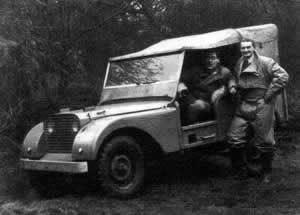
The Wilks Brothers
The first Land Rover was made in 1947 being a hybrid which utilised a Jeep chassis and transmission with a Rover engine and gearbox. The first prototype required the driver to sit in the middle astride the gearbox. A pre-production batch of 48 vehicles were then produced.
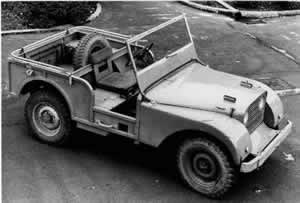
Land Rover 1947 / 48 Prototype
On 30th April 1948 the Land Rover was launched at the Amsterdam Motor Show. Due to the post-war steel shortage and the plentiful availability of aircraft aluminium Land Rovers were manufactured using a rustproof aluminium and magnesium alloy. This led to the development of their reputation as tough, corrosion resistant vehicles. Early vehicles were all painted green due to the use of military surplus aircraft cockpit paint supplies. The Land Rover was classed as a commercial vehicle and therefore it was free from Purchase Tax.
Series I Land Rover
Between 1948 and 1951 the Land Rover used an 80 inch wheelbase and a 1.6 litre petrol engine. In 1949 a second, more comfortable body option was introduced. This option was called the Station Wagon which seated 7 people utilising a wooden framed construction made by Tickford. (http://en.wikipedia.org/wiki/Tickford) This model was far better equipped having a heater, a one piece laminated windscreen and various other options. The vehicle was sold as a private car which led to high levels of purchase tax resulting in relatively few vehicles being sold.
Around 1952 new larger engines of 2.0 litres were introduced and the legal status of the Land Rover was resolved. Up until this time the Land Rover had been classed as a commercial vehicle which meant that its top speed was limited to 30mph. on British Roads. This status was changed to that which we see today which is ‘multi-purpose vehicle’. In 1954 the 86 inch and 107 inch wheelbase models were introduced. These extensions to the wheelbase provided more carriage space.
Series II & IIa Land Rover
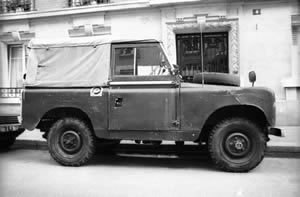
Land Rover Series II 1959
In 1958 the Series II was introduced. This utilised a larger 2.25 litre engine, had wheelbase options of 88 and 109 inches and a more modern body shape. The series IIa, introduced in 1961, used a 2.25 litre diesel engine. Further development of the Series IIa led to the 12 seater station wagon. In 1967 Rover and British Leyland merged. In 1970 they launched the Range Rover. This was followed by the Series III Land Rover in 1971. In 1994 British Aerospace sold the Rover Group to BMW and in 2000 BMW sold Land Rover to Ford. This move preceded the second major redesign of the Range Rover which was launched in 2002.
Jaguar Racing
Jaguar’s racing history started during the 1950s. The company decided to participate in the Le Mans racing with the production of XK-120. Even though the car failed to win in its initial race, the very next year was historic for Jaguar. With the production of the C-Type car of XK120, the company went on to win the Le Mans. Jaguar won again in Le Mans in 1953 and again from 1955 to 1958. It was the Ferrari of 1960s that ended the run of brilliance of then Jaguar D-type. It was only in 1988 Jaguar came again to win with the XJR-9LM edition. Up to date, Jaguar is yet to win another Le Mans race.

It was during the year 2000 that Jaguar decided to join the very competitive F1 racing. Jaguar bought the team previously owned by Jackie Stewart and the name Stewart Grand Prix Formula One Team was renamed to Jaguar Racing. The engines of the F1 racing car featured the Jaguar R series for its chassis and features Cosworth Engines. The team was in high hopes as they hire runner up finisher Eddie Irvine. Also a good addition to the team was the former driver for the Stewart, Johnny Herbert. However, the company has little to no success during the Jaguars stint in Formula 1 racing. Jaguar, racing in its four years stint, never won the Constructor’s Championship, Drivers Championship or even a starting pole position in any of its races. The best finish of the team during its stint was 2002 with Irvine finishing 9th place. Clearly, Jaguar’s place in racing history seemed to be non-existent because of mismanagement of the team and its resources.
Ford, its parent company decided to end its F1 race in after the 2004 season. The Jaguar Racing team was purchased and replaced by Red Bull for the 2005 season.
Jaguar History
Jaguar started in 1922 under the legendary name Swallow Sidecar Company or the SS. The original proprietors of the company were William Lyons and William Walmsley. The company officially changed its name to Jaguar in 1935. The production of cars stopped during the World War II and the company manufactured only sidecars and airplane parts during those hard times.
The company again regenerated its production in 1948 with the release of the XK120 sports car. Only 200 cars were originally planned to be placed in production. However demands has been high and the company since then released other editions based on the XK120 considered by some as the fastest car during that time. Production of this car went on until the late 50s.
The 1960 was the dawn of the E-type vehicles. These types of vehicles were also known as the XKE type of vehicles. It was during that time the company also merged with Daimler Cars originally owned by the Birmingham Small Arms Company. E-Type series continued its production until the early 70s.
1974 was the release of XJ series of Jaguar Cars with XJ12 Saloon. These types of cars continued in production until today. It was during the 1970 until late 80s the car was regarded to be reliable. However, its status as the premier sports and luxury car was revived when the company was officially bought by Ford in 1989. Four years after, JaguarXJ12 was born yet again with a different body.
Currently, the three latest cars designed by Jaguar are the XKR for sports-type vehicles, XJ8 for luxury cars and the C-XF for compact luxury cars. The XF was unveiled only in January, and is planned to be in production in 2008. C-XF is known to be a departure from other car designs. Its looks are still compact but it has a big of edgy sports car kind of feel– only that it has four doors instead of two.



